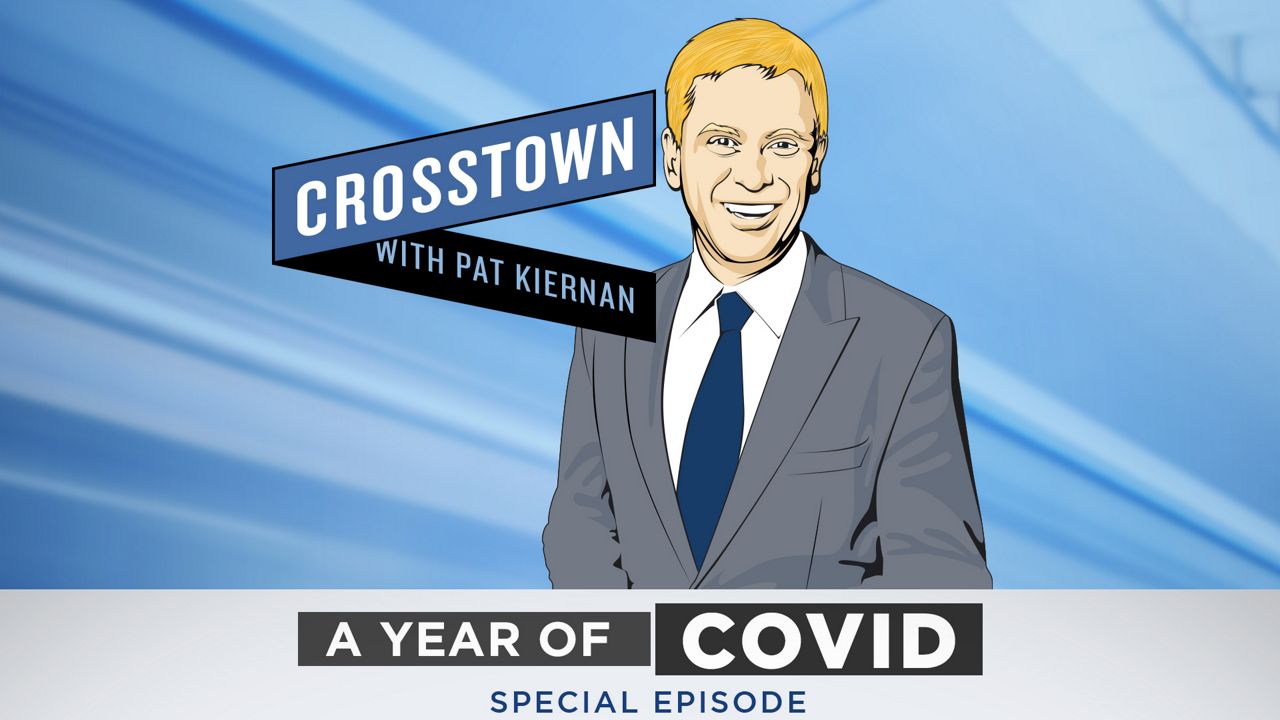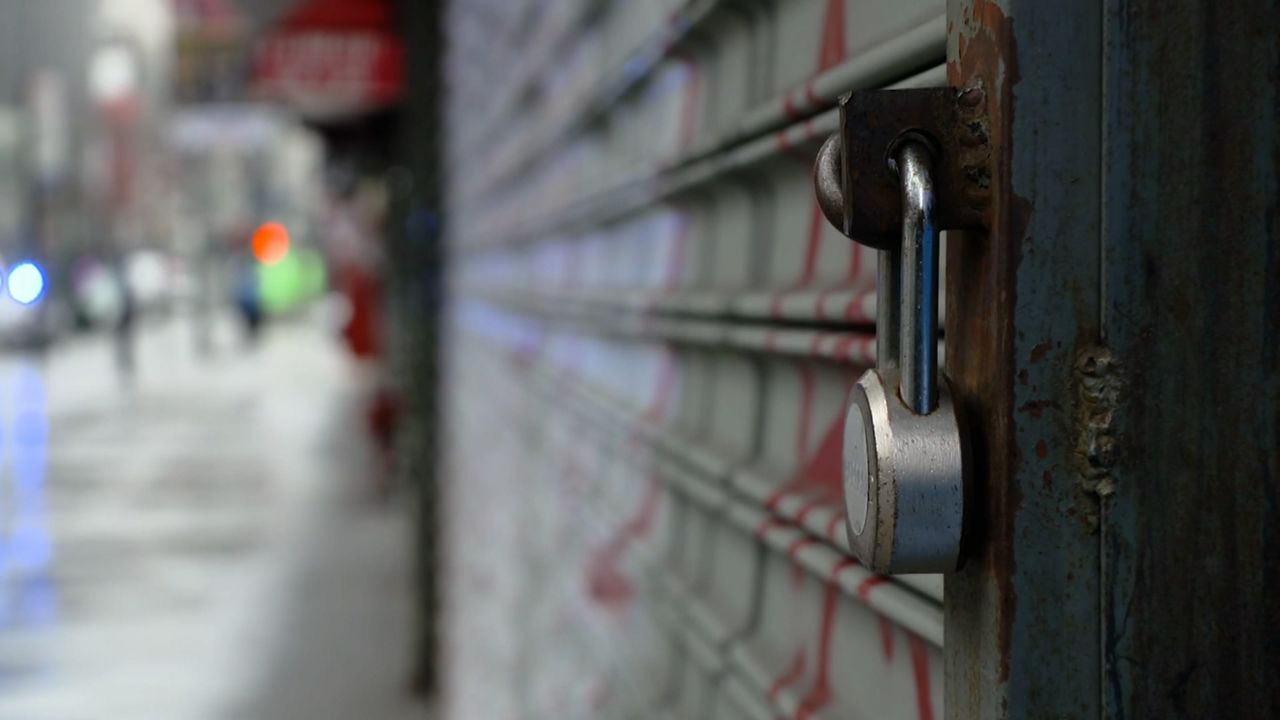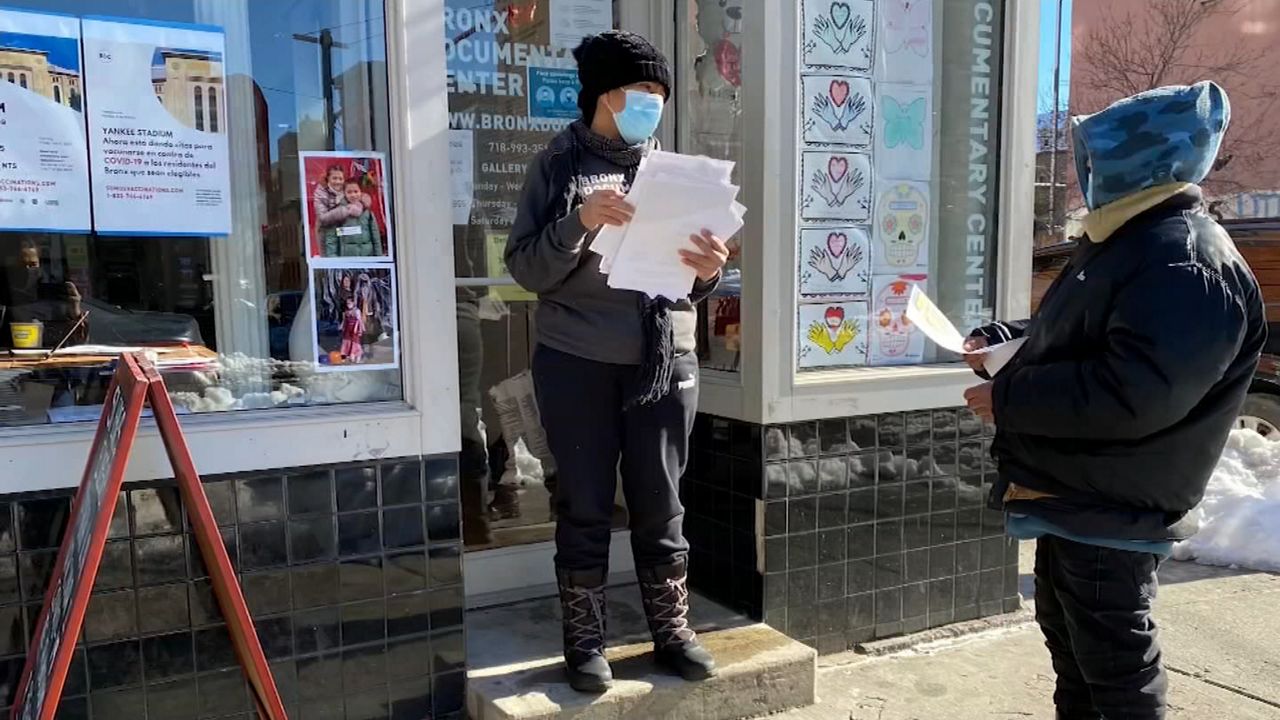It was March 9, 2020. I was at Columbia University covering the sudden cancellation of classes because someone had been exposed to the coronavirus.
"Students await to find out what's going to happen to their midterms this week as they also wait for the results of a coronavirus test," I said in a live shot into a camera.
It was my first time reporting about COVID. It soon became just about the only thing I reported on.
I started documenting the pandemic with my cell phone; the COVID prevention tips placed on kiosks across the city, the hand sanitizer and cleaning products that became part of our live trucks and every other workplace. We even made a makeshift microphone pole to interview people from a distance.
As COVID testing ramped up, the death count climbed too, and one unsettling sound became common, an ambulance.
On March 26, I took a video with the eerie sound ringing outside Elmhurst Hospital, which had become the epicenter of the COVID crisis.
The essential workers, my crew and I were are about the only people outside. It wasn't until April 16, though, that masking up became the story. That diligence helped to blunt COVID’s spread.
May 28: my first story on the launch of outdoor dining.
"When restaurants are allowed to reopen they can do so quickly," I said on air.
Then, the Black Lives Matter protests began, and for a few nights, looting. I took videos of stores vandalized in SoHo, and a photo of me, in a mask, in front of Saks Fifth Avenue, boarded up with plywood and barbed wire.
Kiosks took on a different message as well, displaying the names of Black men and women who were victims of police brutality.
A TikTok I posted reading the names of innocent Black people murdered went viral. On November 7, a different kind of eruption in the streets occurred: New Yorkers celebrating the news that Joe Biden won the presidential election.
“One-hundred percent of the people here are wearing masks," I mentioned on air.
And now, as winter gives way to the second spring of the pandemic, the photos record the roll out of three effective COVID-19 vaccines.
Reporting for the past year has been frightening, sad and frankly hard to believe, but as I speak with more and more people getting their vaccine, what is clear about the months ahead is there is great hope.









